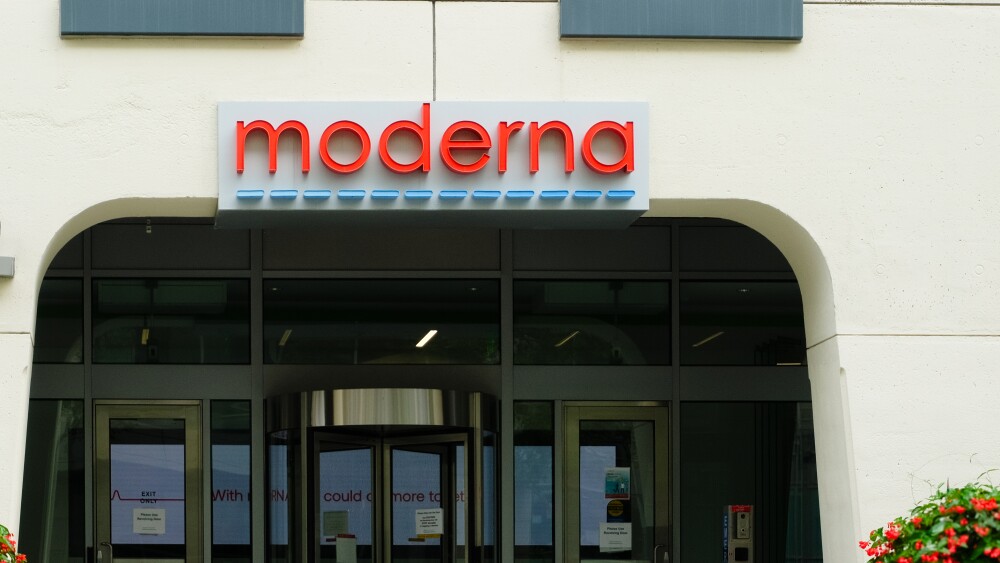While Sutro’s technological platform opens multiple therapeutic doors, the company’s singular focus on homogeneous molecules is a key part of its competitive strategy.
William J. (Bill) Newell, Sutro Chief Executive Officer, pictured above. Photo Courtesy of Sutro Biopharma
Sutro Biopharma wants to use its antibody-drug conjugates (ADCs) as “laser-guided weapons” against cancer cells while sparing the surrounding ones and therefore patients’ quality of life.
“I like to think of antibody-drug conjugates as kind of laser-guided weapons against tumor cells. And then what we can do, and Sutro is very focused on this, is make certain that once the very potent cytotoxin does its job inside the tumor cell, that it is not as damaging to surrounding healthy cells as maybe a chemotherapy would be,” said Sutro Chief Executive Officer, William J. (Bill) Newell.
To that end, you would be hard-pressed to find a biopharma company that has had a more successful second half of 2020 than Sutro, which is leveraging its scalable cell-free protein synthesis platform to develop best-in-class homogeneous molecules for oncology therapeutics.
On December 4th, Sutro announced promising interim data from a Phase I dose-escalation study of STRO-002, one of its first two internally developed ADCs, in ovarian cancer.
Of the 31 trial participants evaluable for RECIST responses, one patient obtained a complete response (CR) and nine achieved a partial response (PR), while 23 patients achieved disease control at 12 weeks. The patients were treated with clinically active dose levels at 2.9 mg/kg or higher.
“We were very pleased to see the patient responses in a very heavily pre-treated patient population. Many of these women had been through six lines of prior therapy and frankly, without our trial, would have been on palliative care for the remainder of their lives,” Newell said.
“We were thrilled to see that of the 31 women who were treated at therapeutically relevant doses, four of those women so far have been on our study drug for over a year, which is remarkable given the advanced state of their disease. And large numbers of women have been on our drug for over 4 months, so that’s a very good indicator that your drug is active and controlling the patient disease,” Newell said.
Newell said that he looks forward to sharing data from a follow-up trial recently launched looking at two different dose levels they feel are optimal for long term disease control, which Sutro plans to report on during the second half of 2021.
Results like these are what motivated Newell to leave a successful law practice for the much different pastures of biotech, which he described as “a robust industry, and one that I felt an affinity to. Not because I have a scientific background, but because it resonated with me as to what the mission of the industry was. And I felt like if I could contribute to that mission, it would be a good way to spend the next part of my career.”
Once established in the industry, Sutro’s proprietary and integrated cell-free protein synthesis and site-specific conjugation platforms, XpressCF® and XpressCF+™, are what drew Newell to the company.
“Imagine a technology that allows you to make vaccines, that allows you to make antibody-drug conjugates, bi-specific antibodies, bi-specific antibody-drug conjugates, cytokine derivatives, and more. It gives you a lot of opportunities to develop new and different therapeutics and vaccines. And I could see that the technology had that potential even back in 2009.”
While conventional methods for expressing proteins make use of cell lines originating from bacteria, yeast, insects, plants, or mammals, Sutro’s technology platform is enabled by the separation, into an extract, of the cellular components necessary to produce proteins, from the protein process generation itself.
This cell-free technology allows for a more flexible platform where a single protein can be rapidly scaled-up, and a single master cell bank used for extract generation can provide the manufacturing platform for multiple different proteins, allowing for accelerated development. Ultimately, this could lead to the accelerated realization of critical weapons against cancer.
While Sutro’s technological platform opens multiple therapeutic doors, the company’s singular focus on homogeneous molecules is a key part of its competitive strategy.
“There is no heterogeneity. That’s not a hallmark of our technology, and that allows us to rapidly compete different homogeneous molecules to understand which one is the optimal one to move forward to the clinic,” explained Newell. “We think it’s much better to identify the single species that is optimal and put your development resources behind that single species. So, that’s what we do. We only make a single species, much the way a small molecule is one single species as well, and we think that gives our molecules a competitive advantage.”
Another important part of Sutro’s commitment to quality is the development of symbiotic partnerships.
“A lot of biotech companies develop a molecule and then they look to partner that molecule. We were looking for something different. We look for a partner that has a deep understanding of cancer biology and targets, but may not have all the tools that we have in order to develop an optimized molecule. So, there’s this tremendous synergy between their understanding of the tumor microenvironment and our ability to rapidly iterate the research efforts and really synergize the research of the two organizations,” Newell said.
Sutro is developing CC99712, a BCMA-Targeting ADC against Multiple Myeloma with Bristol Myers Squibb, M1231, a MUC1-EGFR Bispecific ADC with EMD Serono, and Cytokine Derivatives in the oncology and autoimmune spaces with Merck & Co.
Sutro’s other internally developed ADC, STRO-001, a CD74-Targeting ADC, is currently being tested in an ongoing dose-escalation study for therapeutic use in Multiple Myeloma and Non-Hodgkin’s lymphoma. Sutro presented interim data from the study at the 62nd American Society of Hematology Annual Meeting (ASH), which showed one CR two 2 PRs, as well as a strong safety profile with 90% of treatment-emergent adverse events (TEAEs) being at either grade one or two.
Newell stated that Sutro expects to report on a “more complete data set at the more therapeutically meaningful dose levels in both myeloma and Non-Hodgkin’s lymphoma” in the May or June 2021 timeframe.
CD74 was Sutro’s initial target of choice, and Newell explained the rationale behind this decision.
“We like that target because it is probably one of the most rapid internalizing antigens expressed by any type of cancer cell. So what that means is, as soon as our antibody-drug conjugate finds its way to the surface of the tumor cell, it gets rapidly internalized and that means we’re effective once we bind in terms of getting the cytotoxic payload where we want it to be,” he said.
Looking ahead to 2021, Newell said that Sutro is actively developing new molecules and programs:
“We don’t lack for ideas, and I think we’re fairly well capitalized at this point to pursue multiple different modalities. I think what separates Sutro from a lot of other companies is that we don’t just have one trick. We’re constantly looking at different modalities and different targets.”
While he would not give specifics prior to a set path to the clinical development arena, Newell said that “you can rest assured, we’re looking at many different programs in 2021, and excited to talk about that as they mature.”
Newell believes that the overall oncology therapeutics landscape is in a state of rapid development.
“I think we’re doing more today, and over the next 1-3 years, you’ll see many new more approaches to cancer that have better patient outcomes in terms of extending life and controlling the tumor,” he said. “What we’d like to see more of is that, with good tolerability for patients. That’s what Sutro is focused on: Delivering an impactful therapeutic that is also better tolerated, so that the patient can have a better quality of life while they enjoy hopefully a longer life as well.”






